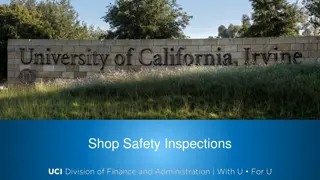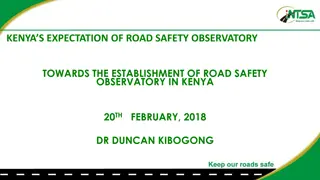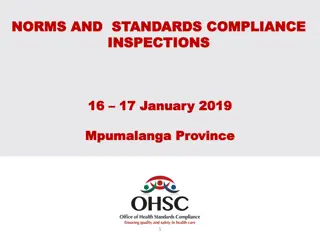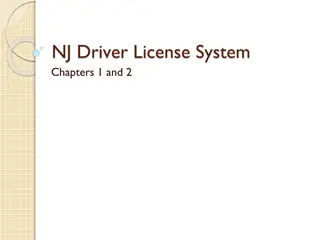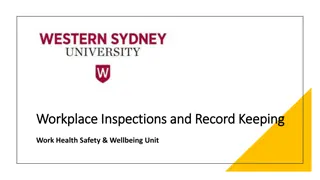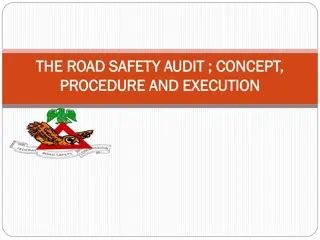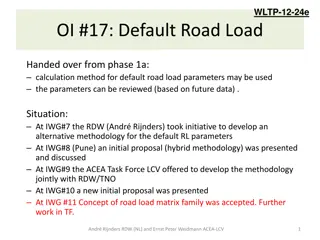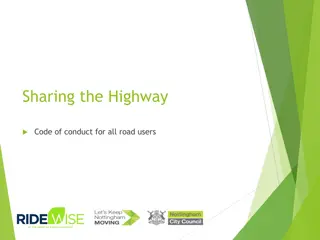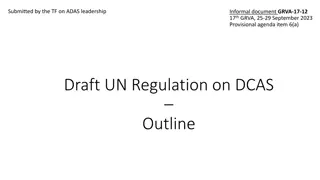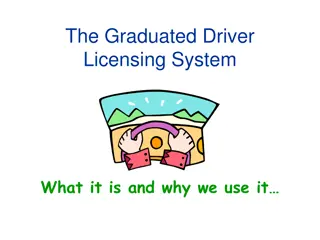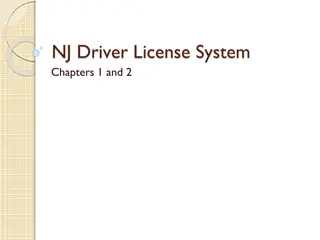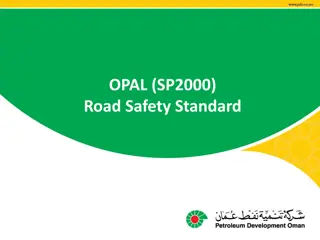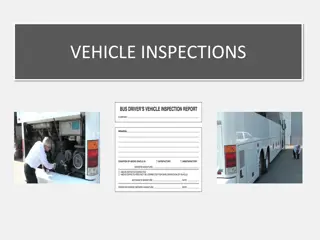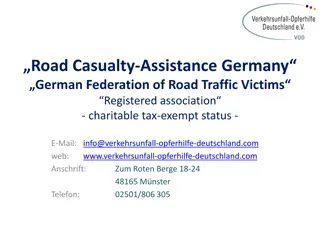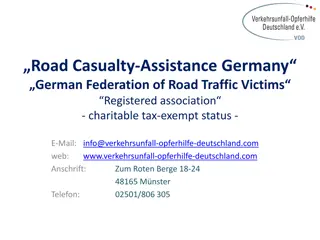Enhancing Road Safety Through Driver Behavior and Vehicle Inspections
A focus on driver behavior and vehicle inspections is crucial for road safety. Inspections should emphasize vehicle equipment and load securement, while addressing driver behaviors like impairment, fatigue, and distraction. Enforcing rules of the road and combating impairment through advanced training programs are vital steps to reduce crash risks. Technology integration offers promising avenues to mitigate human error and enhance safety measures on the road.
Download Presentation

Please find below an Image/Link to download the presentation.
The content on the website is provided AS IS for your information and personal use only. It may not be sold, licensed, or shared on other websites without obtaining consent from the author. Download presentation by click this link. If you encounter any issues during the download, it is possible that the publisher has removed the file from their server.
E N D
Presentation Transcript
Optimizing What Works Road to Zero Coalition March 2018 Captain Christopher J. Turner Kansas Highway Patrol CVSA Board of Directors President
Inspections work Under the inspection procedure, what should the inspector focus on during an inspection?
Vehicle equipment Vehicle components and load securement should be a focus of all Level I and II inspections Maintain and further safety gains achieved since MCSAP began What else?
Renewed focus on driver behavior Most data shows over 90% of all crashes are attributed to driver behavior. Inspections begin and end with our driver contact. What are driver behaviors ? The term encompasses any behavior a driver engages in which may increase the risk of a collision, such as: 1. Rules of the road 2. Impairment 3. Fatigue 4. Distraction Technology will increase safety by decreasing the risk of human error.
Renewed focus on driver behavior Rules of the road It is important to enforce state laws for rules of the road, especially violations which increase the risk of a collision. Examples: 1. Speeding (increased risk of crash severity) 2. Following too closely 3. Failure to maintain lane 4. Failure to signal
Renewed focus on driver behavior Impairment Drug and alcohol impairment are major factors in crashes. Positive drug tests were found more often than alcohol among fatally injured drivers3. Drug and alcohol use increase crash risk by over five times4. Most common drugs by category: 1. THC (Marijuana) 2. Stimulants 3. Narcotic-Analgesics (Pain Control) 4. Sedatives 5. Antidepressants 6. Other5
Renewed focus on driver behavior Impairment Evaluate the driver on all stops, take the time to see signs and symptoms. 1. Standardized Field Sobriety Testing for all officers 2. Advanced Roadside Impaired Driving Enforcement (ARIDE) 12 hour course Introduction and confidence to evaluate a driver who may exhibit signs and symptoms of impairment. 3. Drug Recognition Program (DRE) Advanced training designed to evaluate a driver and come to a conclusion about a drug category of impairment
Renewed focus on driver behavior Fatigue Fatigue often looks like impairment. Conversely impairment often looks like fatigue. Hours of service 1. Ensure checking log book thoroughly 2. Evaluate all exemptions Utilize SFST to evaluate a driver or call an officer certified in ARIDE or DRE
Renewed focus on driver behavior Distraction What is distracted driving? NHTSA and the CDC have similar definitions When a driver s attention is diverted away from driving by a secondary task that requires focusing on an object, event, or person not related to the driving task21. Risk: Between 2001 and 2007, texting while driving caused more than 16,000 highway deaths.12 In 2012, the National Safety Council (NSC) estimated texting while driving accounted between 281,000 and 786,000 motor vehicle crashes.13 Overall crash risk increases 3.6 times over model driving when a driver interacts with a handheld device.144
Renewed focus on driver behavior Distraction For CMV enforcement: C.F.R. 392.80 No driver shall engage in texting while driving C.F.R. 392.85 No driver shall use a hand-held mobile telephone while driving Difficult to see but with diligent tactics can be effectively enforced.
Renewed focus on driver behavior Distraction Passenger vehicles Law enforcement should be familiar with the distracted driving statutes in their jurisdiction. Variances, loopholes, and exceptions create difficulty for officers. Officers have two (general) ways to enforce these statutes. 1. Seeing the driver violate the statute 2. Using vehicle in motion clues consistent with DUI vehicle in motion clues.138
Renewed focus on driver behavior Technology Can improve many of the issues for driver behavior for example. Limiting use of electronic devices in both a CMV or passenger vehicle Potential for eliminating violations of the rules of the road (or increasing notification to drivers when they depart a lane, or follow too closely)
Renewed focus on driver behavior Conclusion Eliminating traffic fatalities will be a multifaceted effort. 1. Continuing to make sure the components of CMVs function within the federal regulations and state law are important 2. A renewed focus on driver behavior is critical to furthering the road to zero.


